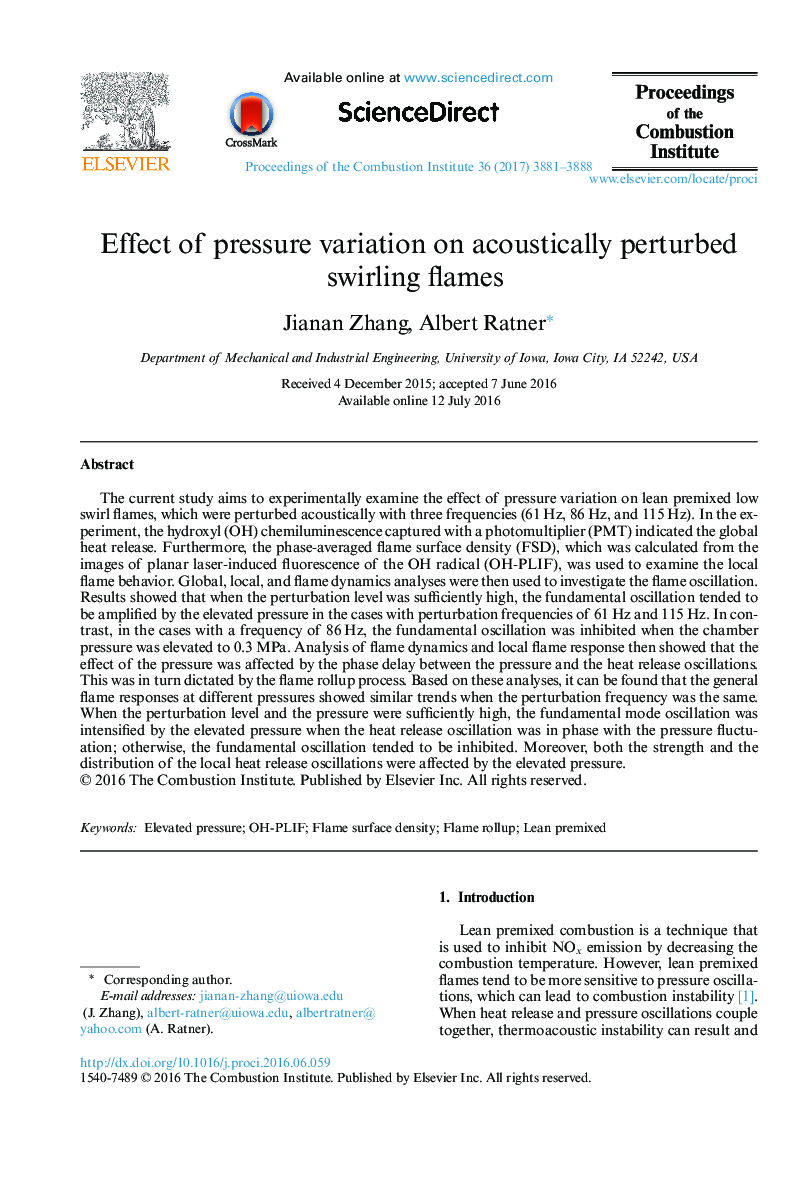| Article ID | Journal | Published Year | Pages | File Type |
|---|---|---|---|---|
| 4915446 | Proceedings of the Combustion Institute | 2017 | 8 Pages |
Abstract
The current study aims to experimentally examine the effect of pressure variation on lean premixed low swirl flames, which were perturbed acoustically with three frequencies (61Â Hz, 86Â Hz, and 115Â Hz). In the experiment, the hydroxyl (OH) chemiluminescence captured with a photomultiplier (PMT) indicated the global heat release. Furthermore, the phase-averaged flame surface density (FSD), which was calculated from the images of planar laser-induced fluorescence of the OH radical (OH-PLIF), was used to examine the local flame behavior. Global, local, and flame dynamics analyses were then used to investigate the flame oscillation. Results showed that when the perturbation level was sufficiently high, the fundamental oscillation tended to be amplified by the elevated pressure in the cases with perturbation frequencies of 61Â Hz and 115Â Hz. In contrast, in the cases with a frequency of 86Â Hz, the fundamental oscillation was inhibited when the chamber pressure was elevated to 0.3Â MPa. Analysis of flame dynamics and local flame response then showed that the effect of the pressure was affected by the phase delay between the pressure and the heat release oscillations. This was in turn dictated by the flame rollup process. Based on these analyses, it can be found that the general flame responses at different pressures showed similar trends when the perturbation frequency was the same. When the perturbation level and the pressure were sufficiently high, the fundamental mode oscillation was intensified by the elevated pressure when the heat release oscillation was in phase with the pressure fluctuation; otherwise, the fundamental oscillation tended to be inhibited. Moreover, both the strength and the distribution of the local heat release oscillations were affected by the elevated pressure.
Related Topics
Physical Sciences and Engineering
Chemical Engineering
Chemical Engineering (General)
Authors
Zhang Jianan, Albert Ratner,
